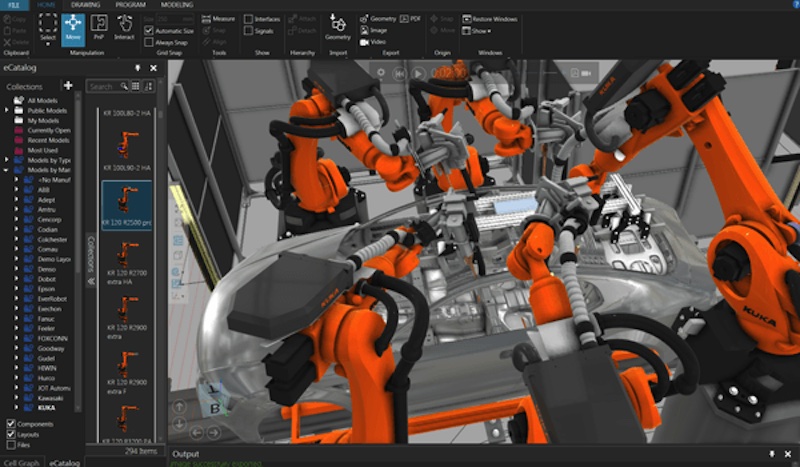The collaborative robot (cobot) market is on a significant upward curve. Its global value is expected to be worth $11.8 billion by 2030, growing at a CAGR of 35.2% from 2024.
In contrast to robots, cobots are designed to work in tandem with humans, with a tangible impact on cost, employee satisfaction, ROI and health & safety. They are also ideally placed to support understaffed workforces as the skills shortage in the sector continues.
But these automated machines do require effective programming to accurately complete their tasks and streamline factory floor processes, otherwise manufacturers face a difficult situation in not being able to deploy cobots where they are most needed.
Infinitely repeatable processes
Cobots are the gateway to fast, highly accurate and infinitely repeatable processes. Human workers will always carry the risk of tiring throughout the day, leading to potential errors in repeatable processes. With cobots, manufacturers avoid this problem.
And the use cases are vast. Sanding, polishing, screwing and palletising are just some of the applications where cobots come into their own.
If we consider polishing as a task, it’s essential that the same force is applied consistently to each product to prevent any discrepancies in quality. Workers would find this an almost impossible job over the course of an entire working day.
Cobots are also highly flexible by nature. Employees can set them up in areas with limited floor space to safely work alongside them.
Being smaller and lighter, they’re also cheaper to deploy. But drilling down into specific tasks, cobots need to be programmed correctly so an item can make its way down the production line.
Even a simple process, such as moving a welding torch in a circular 3D motion around a metal workpiece, often requires manual programming. The problem is that this programming journey can take weeks or even months in the worst cases.
For every day where the cobot remains idle, the ROI figure worsens. Manufacturers are also often complicating deployments by bringing in multiple robot brands, with each possessing different features.
Programming with ease
Rather than pursuing a strategy of manual programming on the physical floor, there is an alternative that takes the process into the digital space.
Robot offline programming (OLP) offers the opportunity for manufacturers to create a highly accurate digital replica of the real cobot and its accompanying work cell. Its movements and associated workflows can be fully replicated via simulation technology.
With OLP at their disposal, factory staff can access a range of benefits. Concurrent programming can be completed alongside the deployment of the cobot, meaning that there’s no delay in production. An expensive purchase can immediately start delivering a tangible ROI.
A virtual sandbox also provides unlimited opportunities to validate an item design, right down to the workpiece design and fixtures that support the workpiece. Any potential mistakes, such as the robot failing to reach its target component, can be fully avoided.
OLP can then be one solution in a wider ecosystem of supporting technologies. Moving beyond the cobots themselves, 3D simulation via a digital twin can be highly valuable in ensuring efficiencies across the entire factory floor.
This digital twin fully replicates the individual processes and interrelationships between every piece of machinery. Where multiple cobots are required, manufacturers can identify opportunities to reconfigure their layouts to make the best use of available floor space.
It may be that other robots need to deliver parts and components around the factory for cobots to then assemble. Staff are able to use the technology to devise the most efficient path they can take to their destination, saving valuable time in the overall production process.
The technology itself is intuitive and made up of plug-and-play pre-defined components with incorporated operating logic, helping to upskill machine operators and build their skills.
The evolution of cobots
The cobot market is poised for remarkable growth, driven by its unique ability to work alongside human employees and enhance efficiency, safety and job satisfaction.
As these specialised robots continue to evolve, their applications in tasks requiring precision and repetition will become increasingly indispensable.
The integration of technologies such as OLP and digital twins further amplifies their value, enabling seamless and efficient programming and deployment.
By adopting these advanced tools, manufacturers can both maximise their ROI and ensure a more flexible, scalable and productive manufacturing environment.
As the global workforce faces ongoing challenges with skills shortages, cobots, backed by supporting tools, offer a crucial solution to maintain productivity and quality, making them an integral part of the future of manufacturing.
[ad_2]
Source link



